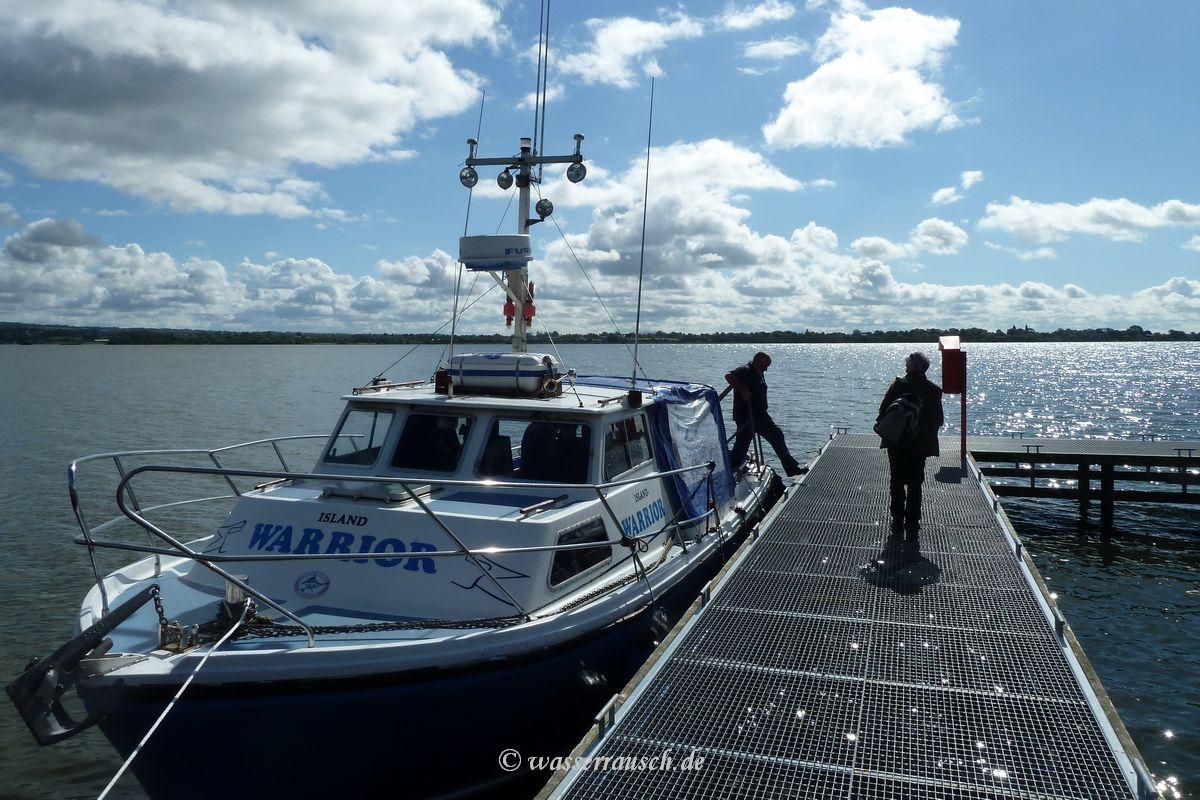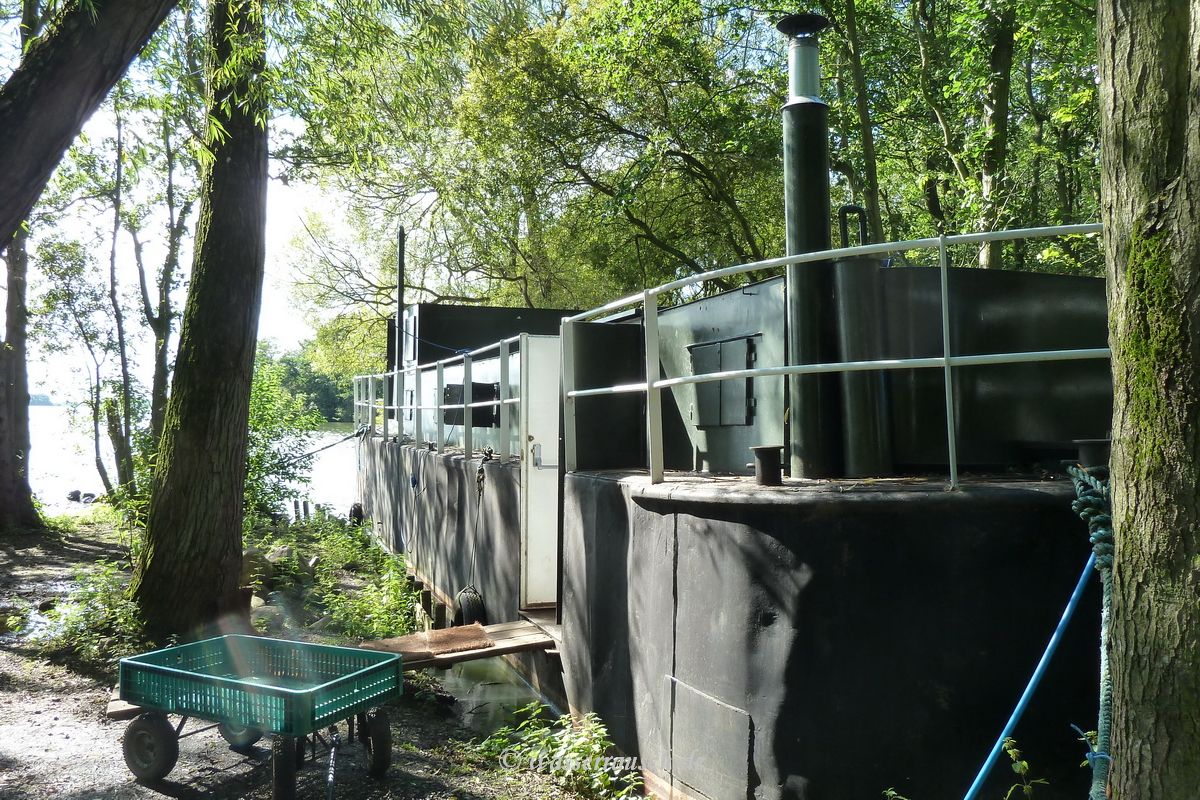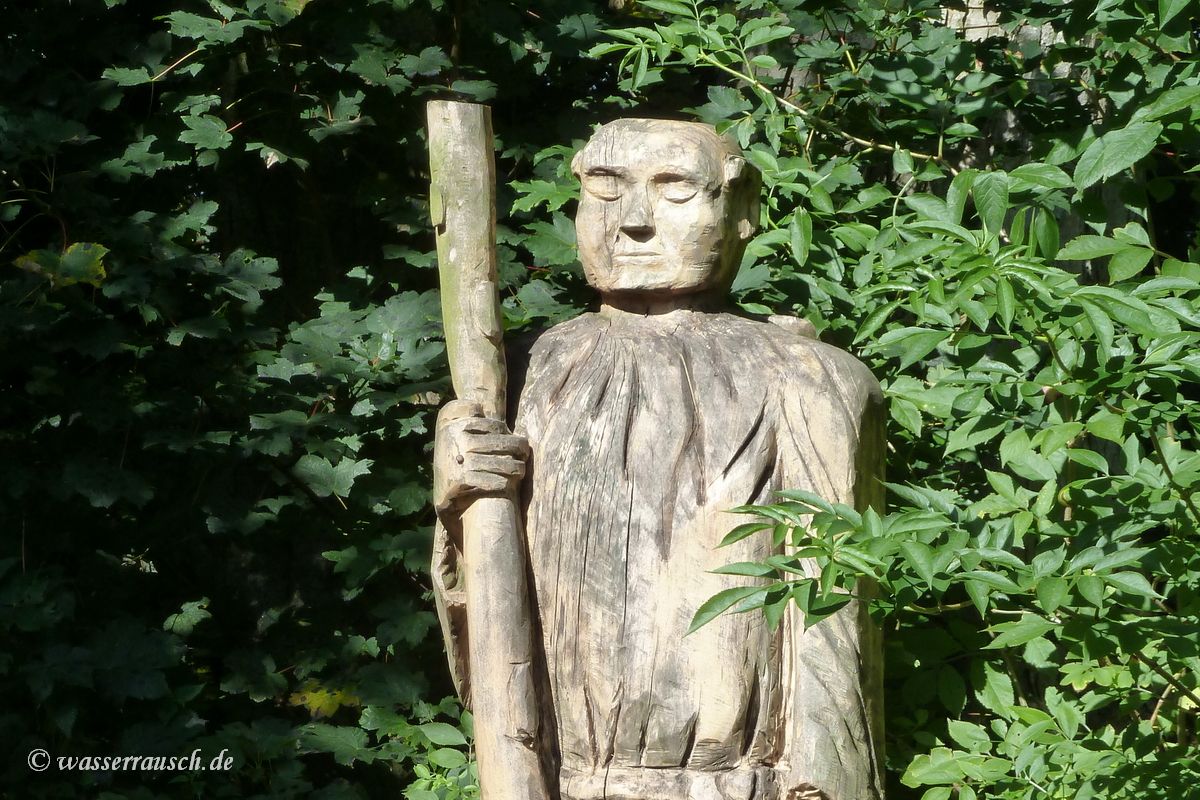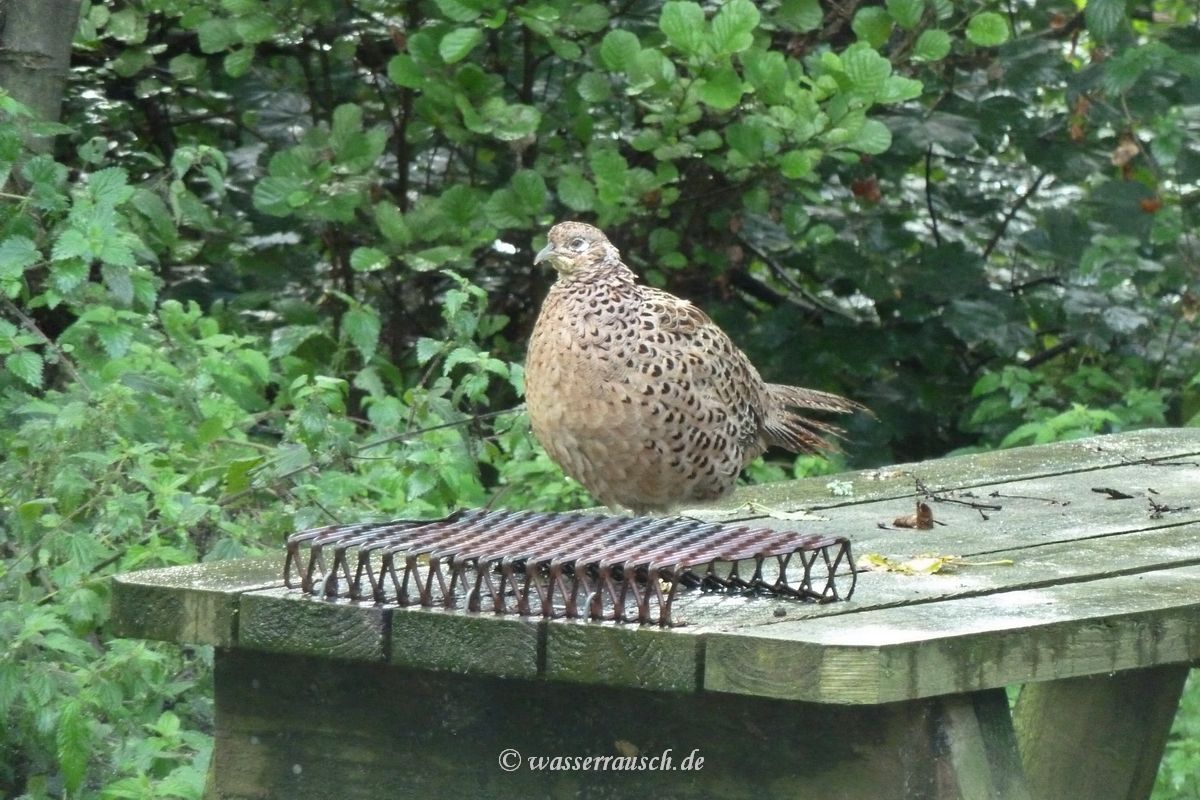 |
 |
The boat trip in September 2010 |
|
Log book Ireland September 2010
|
|
|
|
|
|
Saturday 11/09/2010 Lough Neagh and the River Blackwater valley A broad lake and a brawling river We leave our boat in the harbour of Aghinver and drive by car to Lough Neagh. Our first stop is at the Kinnego Marina and Oxford Island.
Later we drive further on to Sandy Bay on the eastern shore. Here we board on 'Island Warrior', a twin engined 33 foot Aquastar. She has twin 212 h.p. and we enjoy her speed up to 33 kmph. 'Island Warrior' is used as a ferry to Rams Island. Unlike Lough Erne Lough Neagh has very few islands. Rams Island and Coney Island are the large islands on the broad Lough which are now accessible to the public.
Michael Savage is leading the visitors on Rams Island to give us an understanding of nature, history and the great work of the River Bann and Lough Neagh Association (RBLNA, since 2000 a branch of the IWAI) on the island. More than six months were needed to replace the old jetty with a new one of 72 metres in 2007.
A lot of voluntary work has been done on the island, which had been two islands before the lough was lowered by 2.5 metres. The last permanent human inhabitant left the island in 1937. This year, for the first time 'JK16 Sandmartin', the barge JK 16, is used as a floating interpretation centre and is also the cornerstone for volunteers who come to work at the various environmental restoration projects that are planned or in progress (native tree planting, path restoration, habitat creation, invasive species management etc.). The barge is an ex John Kelly coal lighter and was originally used to transport coal along the Lagan from the Belfast Coal Quays to the Gas Works in Belfast. It was subsequently sold to the sand trade on Lough Neagh and was used by Readymix at Toome Bay. Replaced by larger barges JK 16 was donated to the Rams Island Heritage Project.
Michael leads us to the Round Tower, the remains of the O'Neill summer house and the Cardwell cottage site.
Victoria Savage, Michael's daughter, got married on Rams Island and this event is pictured on a piece of wooden art, formed as a boat. There are many carvings in the wood, some old, some new and they give the island a special touch.
The thousands of visitors, lead by the volunteers, - Michael told us in 2009 7500 visited the island - seem to have a low impact on the wildlife, especially the birds. An invasive species is causing a lot of problems, the Himalayan Balsam (Impatiens glandulifera) is overgrowing everything and each plant produces thousand of springing seeds. The RBLNA is now trying to defeat them with pheasants and chickens. We wish them success!
|
Mainpage Wasserrausch Contact Imprint
Copyright Tina und Willi Klug 2010


























